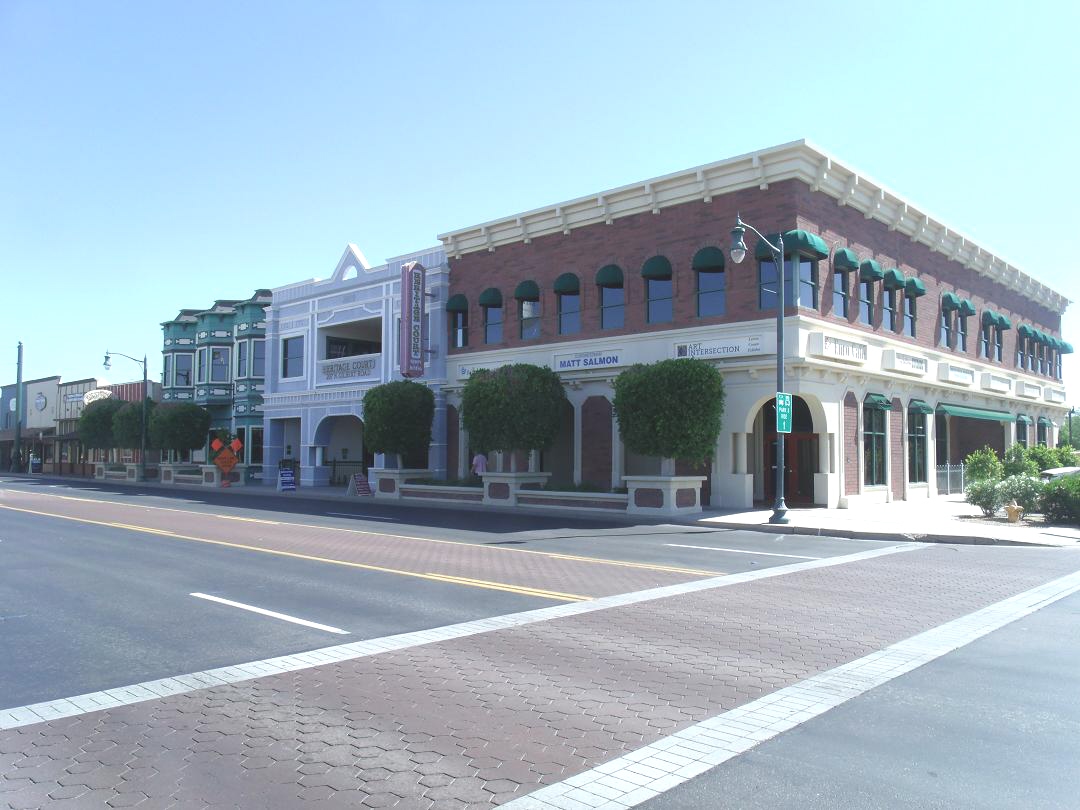
Gilbert, Arizona
Gilbert is a town in Maricopa County, Arizona, United States, located southeast of Phoenix within the city's metropolitan area. Incorporated on July 6, 1920, Gilbert was once known as the "Hay Shipping Capital of the World".[6] The population was 267,918 at the 2020 census,[3] and was estimated to be 275,346 in 2022.[4] It is the fifth-largest municipality in Arizona, and the fourth-largest in the Phoenix metro area. It covers an area of nearly 69 square miles (179 km2).
Gilbert, Arizona
United States
1891
July 6, 1920
Robert Gilbert
68.86 sq mi (178.35 km2)
68.66 sq mi (177.84 km2)
0.20 sq mi (0.53 km2)
1,237 ft (377 m)
267,918
275,346
4,010/sq mi (1,549/km2)
UTC–7 (Mountain (MST) (no DST))
04-27400
0005032[2]
7.8%[5]
Gilbert has made a rapid transformation from an agriculture-based community to an economically diverse suburban center located in the southeastern valley of the Greater Phoenix area. It has grown at an extremely high rate over the last three decades, increasing in population from 5,717 in 1980 to 267,918 as of the 2020 census. The town grew at an average annual rate of over 10% during this 40-year period. It is the largest incorporated town in the United States.[3]
History[edit]
Gilbert was established by William "Bobby" Gilbert, who provided land to the Arizona Eastern Railway in 1902 to construct a rail line between Phoenix and Florence, Arizona. Ayer's Grocery Store, the first store in Gilbert, opened in 1910 and became the location of the first post office in 1912. The location of the town post office moved several times before settling on the east side of Gilbert Road in downtown, where it still stands today. In 1912, many Mormons who had fled the Mormon colonies in Mexico due to the actions of the forces of Pancho Villa settled in Gilbert. By 1915, they began holding church meetings at the Gilbert Elementary School. In 1918, they were organized into the Gilbert Ward.[7]
Incorporated on July 6, 1920, Gilbert was primarily a farming community fueled by the rail line and construction of the Roosevelt Dam and the Eastern and Consolidated Canals. It remained an agricultural town for many years and was known as the "Hay Capital of the World"[8] from 1911 until the late 1920s.
In 2019, the town ranked highly on three national surveys, related to safety, livability and family life; it was named the fourth-safest (of 182 communities), twelfth-most livable town, and seventh-best place to raise a family in the United States.[9]
Arts and culture[edit]
9/11 Memorial[edit]
Gilbert is home to a 9/11 Memorial, located at Town Hall[23] that features an eight-foot steel girder beam[24] which held up the North Tower of the World Trade Center. Former Gilbert Fire Chief Collin DeWitt fund-raised extensively for three years to create the memorial, and to bring the beam from New York City to Arizona. He drove to collect it himself along with his then Assistant Fire Chief Jim Jobusch.[25]
The design of the memorial angles the beam, which puts it in reach of everyone. Four granite walls bear the names of those lost to the attacks. Concrete was poured in the shape of a pentagon for the foundation of the memorial,[26] and is surrounded by bricks which carry names of some of those who helped to donate to bring the memorial to life. There was an unveiling ceremony of the memorial on the 10th anniversary of the attack on September 11, 2011.[27]
Historic place[edit]
Gilbert Elementary School was built in 1913, and now houses the Gilbert Historical Museum. It is listed in the National Register of Historic Places.[28]
Education[edit]
Most of Gilbert is zoned to schools in the Gilbert Public Schools, while other portions are zoned to districts including the Chandler Unified School District, Mesa Public Schools, and the Higley Unified School District. Also in Gilbert are charter schools such as Eduprize (the first charter school in Arizona), American Leadership Academy, and Legacy Traditional School. The town is also home to Gilbert Christian Schools, a chain of private schools. In 2018, the Park University opened the Gilbert Campus Center after leasing 18,000-square-foot (1,700 m2) at the University Building in the city's Heritage District.[38]